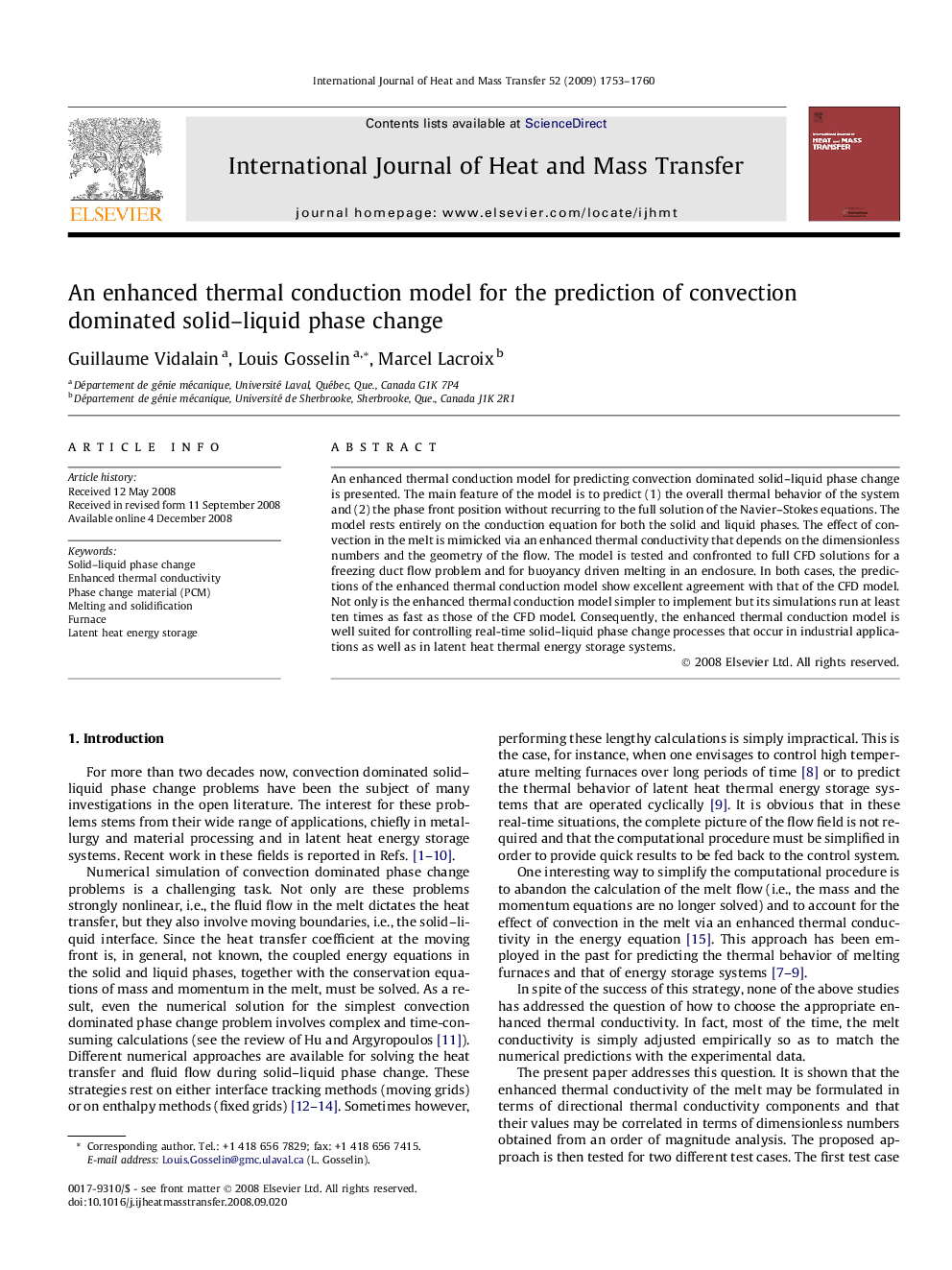| Article ID | Journal | Published Year | Pages | File Type |
|---|---|---|---|---|
| 661567 | International Journal of Heat and Mass Transfer | 2009 | 8 Pages |
An enhanced thermal conduction model for predicting convection dominated solid–liquid phase change is presented. The main feature of the model is to predict (1) the overall thermal behavior of the system and (2) the phase front position without recurring to the full solution of the Navier–Stokes equations. The model rests entirely on the conduction equation for both the solid and liquid phases. The effect of convection in the melt is mimicked via an enhanced thermal conductivity that depends on the dimensionless numbers and the geometry of the flow. The model is tested and confronted to full CFD solutions for a freezing duct flow problem and for buoyancy driven melting in an enclosure. In both cases, the predictions of the enhanced thermal conduction model show excellent agreement with that of the CFD model. Not only is the enhanced thermal conduction model simpler to implement but its simulations run at least ten times as fast as those of the CFD model. Consequently, the enhanced thermal conduction model is well suited for controlling real-time solid–liquid phase change processes that occur in industrial applications as well as in latent heat thermal energy storage systems.
